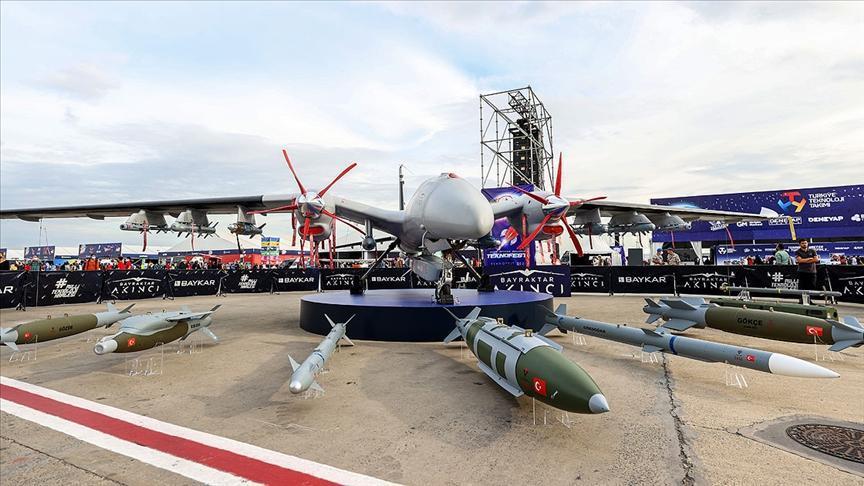
Türkiye’s share in global arms exports increased from 0.8 percent in 2015-19 to 1.7 percent in 2020-24, marking a staggering 103 percent change, according to a report by the Stockholm International Peace Research Institute (SIPRI).
Türkiye ranked the 11th largest exporter of arms in the world as of 2024, said the SIPRI report released on March 10.
The United Arab Emirates was the largest market for Turkish arms exports with an 18 percent share, followed by Pakistan at 10 percent and Qatar at 9.9 percent.
The country’s share in global arms imports declined by 33 percent from 1.7 percent in 2025-19 to 1.1 percent in 2020-24.
Spain was the largest supplier of arms to Türkiye with a 34 percent share in the country’s total arms imports. Italy and Germany were the second and third largest suppliers at 24 percent and 18 percent, respectively.
The United States consolidated its position as the world's top weapons exporter, accounting for 43 percent of global exports, far ahead of the second largest, France, which accounted for 9.6 percent, according to SIPRI.
The overall volume of arms transfers globally remained at roughly the same level as in 2015–19 and 2010–14 but was 18 percent higher than in 2005–2009, the report noted.
European arms imports overall grew by 155 percent between the same periods, as states responded to Russia’s invasion of Ukraine and uncertainty over the future of U.S. foreign policy, it said.
NATO countries in Europe more than doubled their arms imports in the past five years, more than 60 percent of which were purchases of U.S. weaponry.
“The new arms transfers figures clearly reflect the rearmament taking place among states in Europe in response to the threat from Russia,’ said Mathew George, program director with the SIPRI Arms Transfers Program.
Ukraine became the world’s largest importer of major arms in the period 2020–24, with its imports increasing nearly 100 times over compared with 2015–19.
At least 35 states sent weapons to Ukraine after Russia’s full-scale invasion in 2022, and substantial further deliveries are in the pipeline. Ukraine received 8.8 percent of global arms imports in 2020–24.
Most of the major arms supplied to Ukraine came from the U.S. (45 percent), followed by Germany (12 percent) and Poland (11 percent).
India was the world’s second-largest arms importer, with its imports reflecting perceived threats from both China and Pakistan. However, its imports decreased by 9.3 percent between 2015–19 and 2020–24, according to SIPRI.